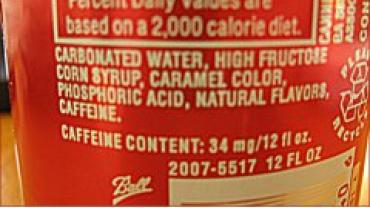
HFCS
While the corn industry's ploy of changing the name of high fructose corn syrup (HFCS) to the more cheerful and innocuous corn sugar may according to P.T. Barnum fool some of the people all of the time to paraphrase Shakespeare: high fructose corn syrup by any other name still tastes as sweet and still when consumed in excess amounts causes metabolic issues. (I'm sure that is what Juliet would have said if reciting these words today.) Anyway I believe that the general consensus lies on the side of limiting consumption of this ever-present food additive as much as possible based on current science.
But unlike Marc Antony (please forgive my annoying references) in Shakespeare's Julius Caesar I do not come to bury HFCS as much as to explore the diabetogenetic properties of some other ubiquitous compounds consumed routinely by many.
For instance the irony is not lost on me that statins the medications used to lower cholesterol and ultimately reduce the risk of developing cardiovascular disease can also significantly increase the risk of developing diabetes in long-term users a condition that is known to you guessed it contribute to the development of cardiovascular disease. Statins may facilitate this effect through a variety of mechanisms including impairing cellular glucose uptake and insulin secretion.
Gluten
Like HFCS opponents of gluten have continued to multiply in the healthcare professions and in the community at large. Studies have indicated that gluten consumption during infancy in genetically predisposed children can initiate a cascade of autoimmunity that can lead from the development of celiac disease to beta cell destruction in type I diabetes. Gluten proteins can increase zonulin production a protein that modulates the tight junctions of the gastrointestinal tract. Chronic overproduction of zonulin is associated with pathological levels of intestinal permeability. This of course has been implicated in the breakdown of the GI mucosa adversely affecting immune function and thus possibly contributing to autoimmunity.
Additionally proteins from corn and the milk protein casein were also implicated by increasing the risk of developing autoimmune diabetes.
Pollutants
Another known class of diabetogenic compounds is the persistent organic pollutants or POPs. These are toxic chemicals that have made their way into drinking water the air and the food chain. They can originate from various sources typically from their use in agriculture disease control manufacturing or industrial processes and include chemicals such as dioxin DDT and PCBs. These highly toxic lipophilic chemicals that accumulate mainly in adipose tissue adversely affect human health by acting as hormone disruptors encouraging the development of obesity insulin resistance and type II diabetes. Very recently cross-sectional studies and several prospective studies have suggested that even low level exposure to some PCBs predicted the future risk of type 2 diabetes in the general population.
Clinically and therapeutically in light of this information it seems clear that those patients who are obese may need to be taken through a detoxification process since environmental toxins as well as medications tend to sequester themselves in fatty deposits. Some clinicians even opine that the accumulation of fat is the body's protective mechanism; an attempt to bury and minimize the deleterious effects of these chemicals.
Through dietary restrictions and detoxification programs along with addressing GI health great strides may indeed be achieved in the correction of a variety of autoimmune conditions possibly including type II diabetes.
Michael Fuhrman D.C.